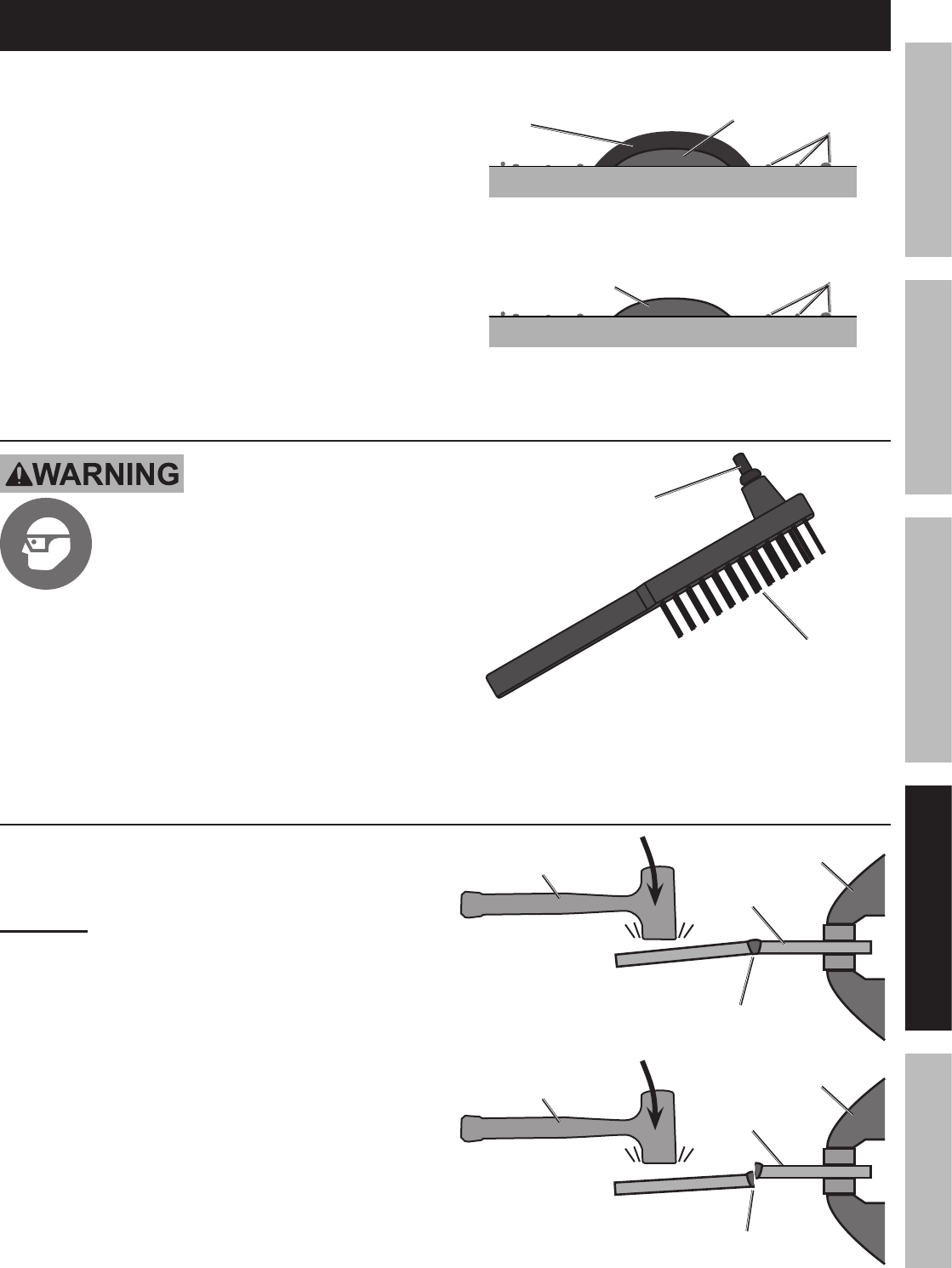
Page 23For technical questions, please call 1-800-444-3353.SKU 68886
Welding Tips
A good way to test welding technique is to examine
a weld’s appearance after it has cooled and the slag
has been removed. Then, better welding can be
learned by adjusting your weld technique
to remedy any problems found.
A typical solid wire (GMAW) weld
before cleaning.
base metal
weld bead
spatter
A typical flux-core wire (FCAW) weld
before cleaning.
base metal
weld bead
slag
spatter
Cleaning the Weld
TO PREVENT SERIOUS INJURY:
Continue to wear ANSI-approved safety
goggles and protective wear when
cleaning a weld.
Sparks or chips may fly when cleaning.
1. A weld from flux core wire will be covered by slag, use
the Chipping Hammer to knock this off. Be careful
not to damage the weld or base material.
2. Then, use the Wire Brush to further
clean the weld or use an angle grinder
(sold separately) to shape the weld.
Chipping
Hammer
Wire Brush
Strike Test
A test weld on a PIECE OF SCRAP can be tested by
using the following procedure.
WEAR ANSI GOGGLES DURING THIS PROCEDURE.
WARNING! This test WILL damage the weld it is
performed on. This test is ONLY an indicator of weld
technique and is not intended to test working welds.
1. After two scraps have been welded together and the
weld has cooled, clamp one scrap in a sturdy vise.
2. Stay clear from underneath while you strike
the opposite scrap with a heavy hammer,
preferably a dead-blow hammer.
3. A GOOD WELD will deform but not break,
as shown on top.
A POOR WELD will be brittle and snap at the weld,
as shown on bottom.
clamp
SCRAP
workpiece
GOOD WELD
bends and is not brittle
dead-blow hammer
clamp
SCRAP
workpiece
POOR WELD
snaps or cracks
dead-blow hammer
SAFETYMAINTENANCE BASIC WELDINGWELDING TIPS SETUP


















